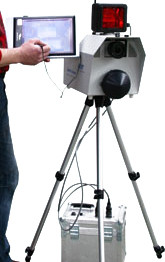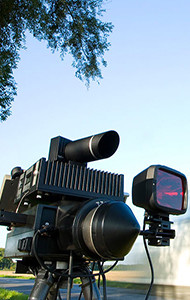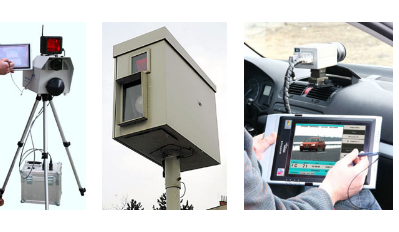
Ka-band
One of the most commonly used radar band for speed measuring. Ka-band road radars measure speed using the Doppler effect with reflected radio waves in the microwave band. The beam emitted by the radar antenna bounces off the body of passing vehicles back to the radar, is captured by the antenna and amplified. By processing the reflected signal by complex electronic circuits, the speed of the passing vehicle is calculated.

MultaRadars CD/CT
Are modern 3D radars used for example in Austria, Iceland, Netherlands, Poland, Portugal, Slovakia, Spain. Their detection is difficult and requires a specially modified antenna.
More information about MultaRadars
GATSO radars

Are hardest to detect, they can be stationary or mobile. They are used in Belgium, France, Finland, Great Britain, Lithuania, Netherlands, Slovenia. They are divided into RT2/RT3/RT4 - a higher number means a more modern version. The detection of these radars is possible only by the latest and most sensitive detector. More information about GATSO radars
K-band

The most widely used band at all, is comonnly used for automatic doors at petrol stations and shops, adaptive cruise control, etc. Devices operating in the “K” band cause false alerts, so their quality filtration is essential.
X-band
Less and less used band, used only in some Eastern European countries.
Narrow
The frequencies of a specific part of the band are detected in the narrowed band to increase sensitivity and eliminate false alerts.
Wide Broadband mode
Searches for example the entire Ka band from 33.4 GHz to 36.0 GHz. Use this setting only if absolutely necessary, as it shortens the detection distance and increases the number of false alerts.
Filters and false alerts
For the correct functioning of the detector, it is essential to filter unwanted radar signals so that the detector reports only police radars. The filter settings are further described on page 7 in the manual (ALERTS NOTIFICATION SETTINGS). More information about our false alert filtering
Laser measurement
Laser speed measurement is based on emitting an ultra narrow and short-time beam of electromagnetic light at the level of infrared radiation. The signal is transmitted for a very short time at a specific place (usually car’s licence plate) and therefore, it is almost imposible to detect it in advance. The only effective protection against laser speed measurement is an additional active laser system. More information about laser speed measuring.
GPS
The GPS antenna also detects measurements that do not emit any signals. These include section speed cameras, stationary speed cameras (induction loops) or “red-light cameras”. We keep adding everything continuously to the GPS database of stationary threats - all you have to do is keep the detector updated.
